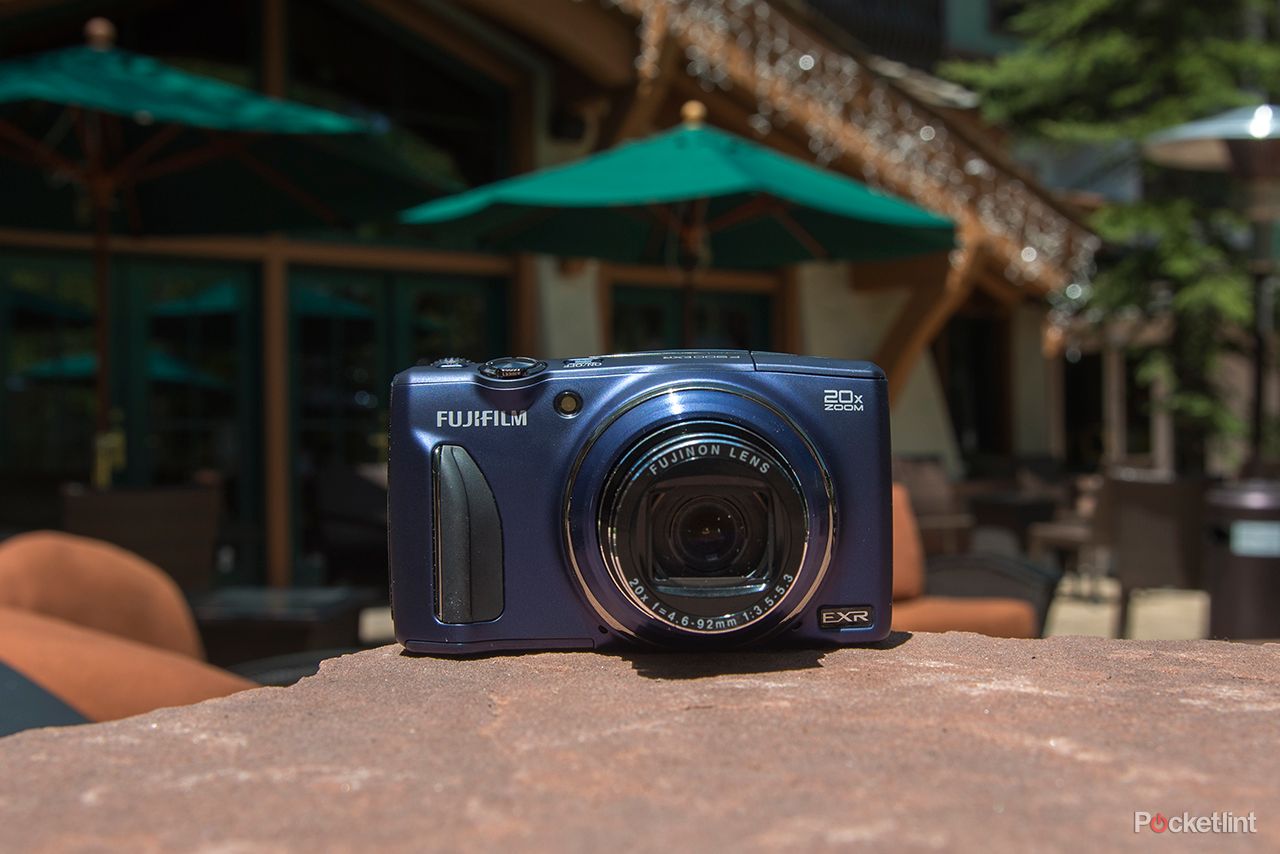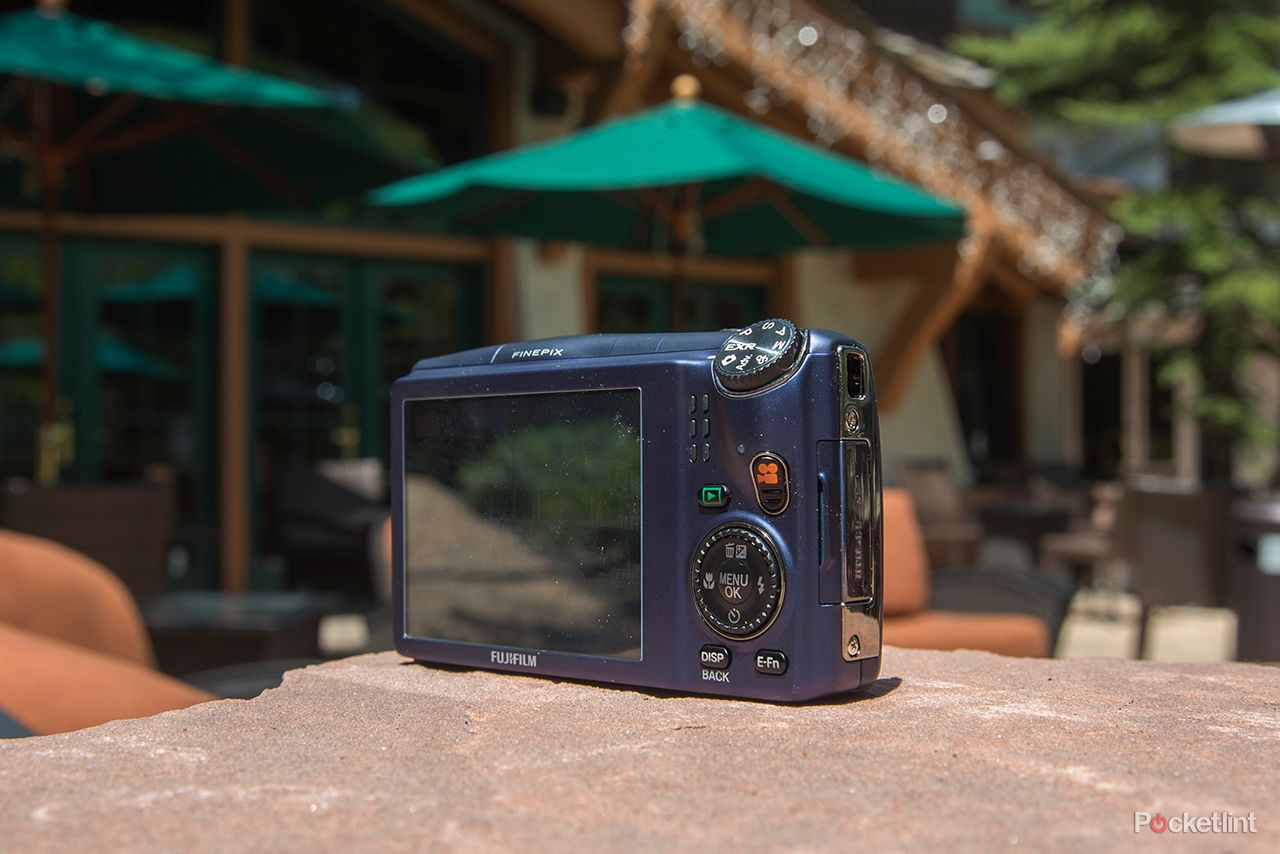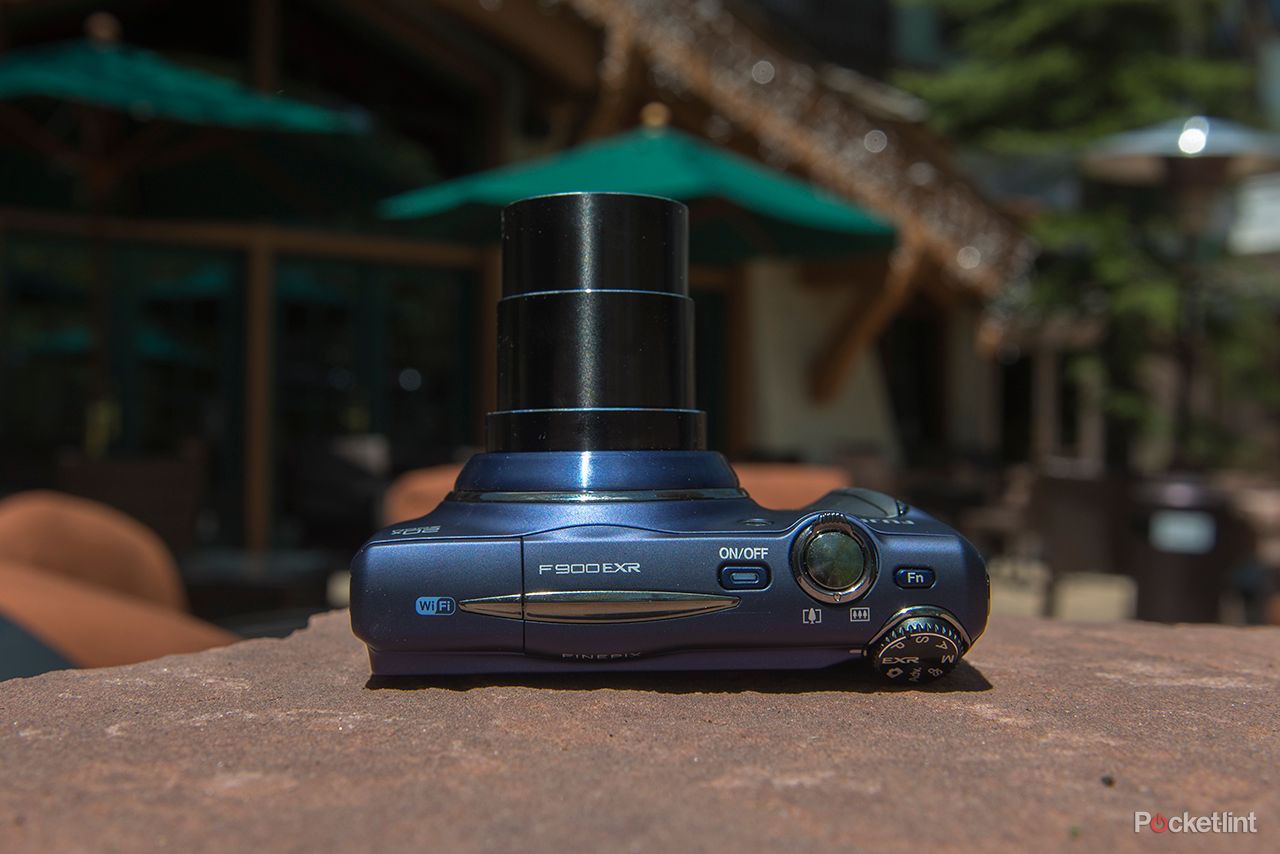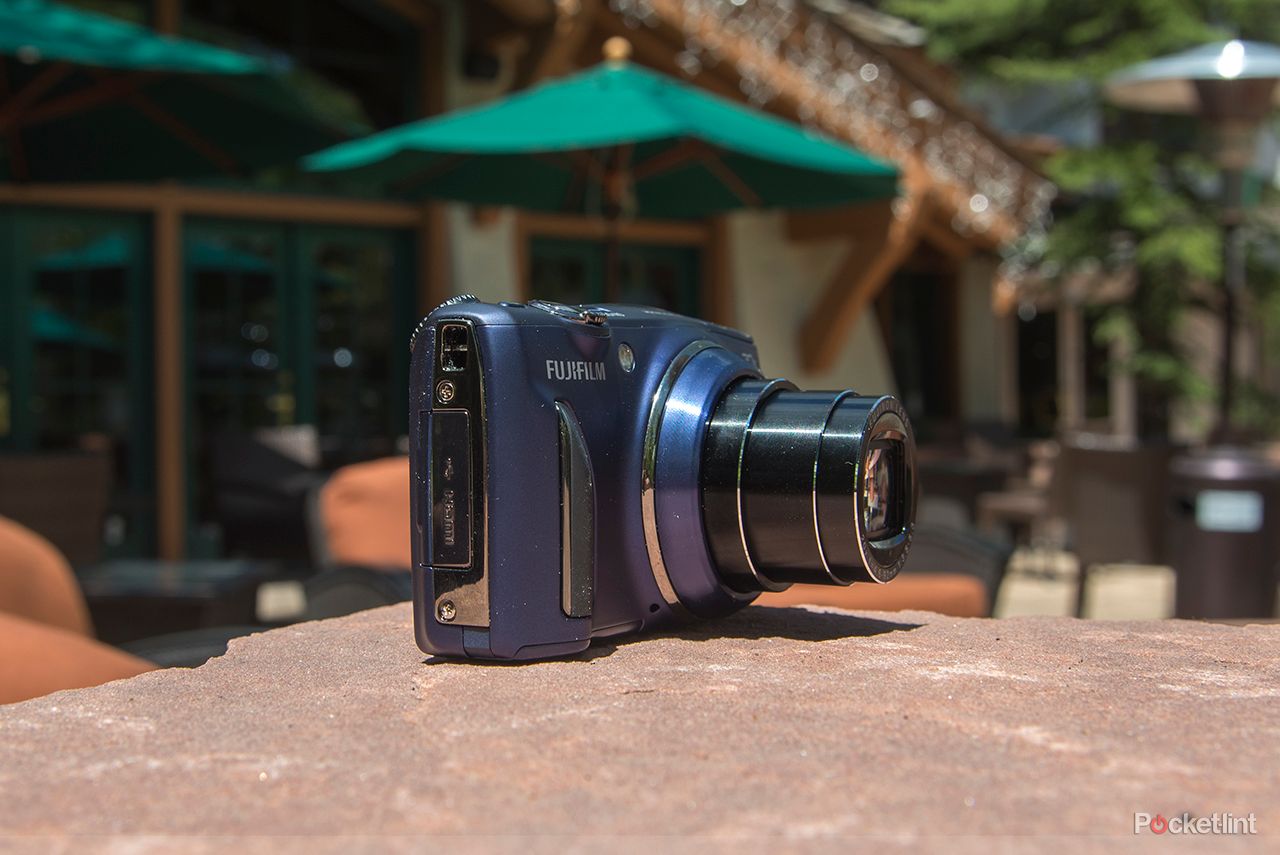The Fujifilm FinePix F900 puts the 'Lint in a state of deja vu. The Japanese company has been pushing out F-series refreshes every six months, with each release taking baby steps rather than leaps forward in terms of feature set. The F900EXR has all the familiar makings of a decent travel zoom compact - a significant 20x optical zoom lens offering a 25-500mm equivalent optic in a pocketable body size - among rarer features such as raw file capture that make it sound like an attractive prospect.
Our quick take
It's the small things that can make a big difference. Despite the disappointing lack of optical image stabilisation, the F900EXR has fixed some of its predecessors' shortcomings. Autofocus - while not always super-fast - now doesn't "freeze" at longer focal lengths, close-up macro mode is impressive and the camera's buffer is capable of churning through raw file capture without holding-up taking a second shot.
Image quality isn't DSLR-beating by any means - largely down to the lens - but within the confines of travel zoom compacts we think the new EXR sensor does a good enough job of dealing with image processing in all conditions. It's really the EXR technology - which makes snap decisions on which processing mode to use for back-lit and dim-lit subjects - which is the highlight of this Fujifilm offering to make lighter work of those more difficult scenes.
The F900EXR still isn't quite the champion of its kind, but through the series' progressive ironing-out of bugs and shortcomings we feel it's a whisker ahead of its F800EXR predecessor. In short: it's a decent compact with plenty of quirks - some good, some bad - that amounts to a generally decent snapper.

Fujifilm FinePix F900EXR - 4.0 / 5
| FOR | AGAINST |
|---|---|
|
|
Fujifilm FinePix F900EXR
All that's well and good, but it's nothing new - that's been the state of the F-series has been in for a couple of years. But in the case of the F900EXR there's change afoot: an all-new EXR CMOS II sensor that includes pixels designated for autofocus on its surface is the big new feature. Can this, alongside other tweaks, shift the F900EXR up a gear and make it a must-have travel zoom compact?
What's new?
On the surface of things - despite our review sample's fetching new midnight blue paint job - the F900EXR is a doppleganger of the F800EXR model we reviewed back in October 2012. And that's for good reason: it's the very same chassis design. Newcomers to the series won't be too worried about that, of course, and with fresh eyes there's a lot to like about the camera - it's affordable, robust and pocketable considering the wide-ranging lens' capability.
READ: Fujifilm FinePix F800EXR review
But it's not so much what's visible that matters in the case of the F900EXR. As mentioned there's a new sensor: the larger-than-standard 1/2-inch CMOS sensor is complete with Fujifilm's EXR II technology - a structure arrangement on the sensor's surface unique to Fujifilm - that can use multiple sensor-level "pixels" to produce one single pixel in an image to the benefit of image noise or dynamic range as necessary. It's a proven technique that we've admired in previous models, but the F900EXR adds that extra dash of hot sauce with new sensor-level autofocus pixels.

Elsewhere there's a new E-Fn - or electronic-function - button to the rear bottom right which provides each physical button on the camera's rear with a secondary function. Quick-access ISO, burst mode, dynamic range, geotagging, focus mode and film type are all available as shown on the screen. However - and just like the XF1 that first introduced this feature - the screen looks as though it's asking to be pressed, as if it were a touchscreen - but that's not the case as one hasn't been introduced.
Instead the F900EXR does introduce a push in resolution, taking the 3-inch panel up to a new 920k-dot high. Most welcome, yet a touchscreen is one of those things many have come to expect as standard at this level. Bright sunlight is also definitely the enemy as we discovered on sunny shores - but then that's a common issue with many compact cameras. There is an option to boost the screen's brightness but it makes everything look falsely overexposed, so is one to avoid in general.
READ: Fujifilm XF1 review
Fully featured
On paper the F900EXR has a stack of features to boast about: raw file capture, an 11 frames per second burst mode, a notable 25-500mm equivalent lens, even GPS and Wi-Fi connectivity when paired with a smartphone.
But the one biggie that we really wanted to see is still absent: there's no optical image stabilisation, instead it's restricted to the sensor. Of course this is still beneficial, but the handshake-countering feature won't benefit preview when composing - a near-essential at the longer focal lengths and something the majority of Fujiiflm's competitors offer at this level. We've been wondering about it's absence for a long time, so it's disappointing to see it amiss.
However, there is one jump for joy moment. The new sensor seems to have ironed out some of the shortcomings with the previous models where longer focal lengths would "freeze" the preview when acquiring autofocus. No longer: the F900EXR shows everything in real-time whether it's in focus or not. This makes us happy.
Other functions operate well too. The camera nips through its zoom range and autofocus did a good job of tackling far-away subjects, close-up wide-angle snaps and everything in-between. Even the camera's buffer can clear a raw file to the card without putting the camera's ability to snap another shot in duress - it does, however, take some 7 seconds to write the file to the card, during which time settings and playback aren't accessible. It's shoot with the same or wait for the buffer to crunch through things. Many won't use raw, but those that will may find its slow write times irksome.
We're just as impressed with the F900EXR's close-focus ability as its predecessors. At the widest-angle 25mm setting it's possible to shoot just a couple of centimetres away from a subject and, although such distance obviously can't be maintained further up the zoom range, the macro mode does still come in handy at some of the wider-mid focal lengths.
However, autofocus can still be sluggish at the longer focal lengths or in low light conditions and the lens' average aperture range doesn't help to shoot when the lights are low, nor take as much control as more creative wide-aperture compacts offer. Different things for different markets, of course, but with cameras such as the Nikon P330 available for the same asking price it's something to think about.
READ: Nikon Coolpix P330 review
The ongoing inclusion of wireless image transfer hasn't blossomed into a full-on in-camera Wi-Fi service for the F900EXR, but based on competitors' approaches with such technology we don't think it's a major loss. Battery life can be saved and when sharing from camera becomes an essential it's possible to pair up your smart device with the camera in order to piggyback on the 3G or Wi-Fi service. That's the only way to do it - there's no way to get the Fujifilm to speak directly to the web, and so the middleman smartphone adds an extra hurdle.
Image quality and EXR
The 1/2-inch sensor size found in the F900EXR isn't exactly huge, but it is a touch larger than most standard compacts with their 1/2.3-inch sensors. That's one element that gives this Fujifilm's 16-megapixels a little more breathing space, but it's the EXR technology that really helps it soar.
Fujifilm FinePix F900EXR review - image shot at ISO 125 - click for full size raw sample
Previous models we've thought to be good rather than exceptional. The F900EXR doesn't seems to have significantly pushed things forward. Now that's not to say we're not impressed with the low ISO quality, but ongoing overexposure issues are prevelant and the lens introduces issues from softness to chromatic aberrations and flare.
The inclusion of raw files is an attractive prospect and do retain more detail at the low-mid settings at the expense of some additional image noise. From ISO 400 there's significant mottled grain-like patterns visible, but it's not always as destructive as it sounds - it depends on the shot.
Fujifilm FinePix F900EXR review - image shot at ISO 400 - click for full size raw sample
Then there's the EXR mode. This clever process-based feature is one of the F900EXR's highlights. The camera can decide whether the scene should be shot at the full 16-megapixel resolution when conditions are bright, at a reduced 8-megapixel resolution to adapt for better dynamic range when backlighting is present, or by using the high sensitivity, low noise mode to shoot two shots for a lower image noise output. Best bit is that it genuinely works and is all the better with the latest sensor in tow.
Fujifilm FinePix F900EXR
To recap
The F900EXR still isn't quite the champion of its kind, but through the series' progressive ironing-out of bugs and shortcomings we feel it's a step ahead of its F800EXR predecessor. In short: the F900EXR is a decent travel compact with plenty of quirks - some good, some bad - that amounts to a genuinely solid slice of photographic pie.





